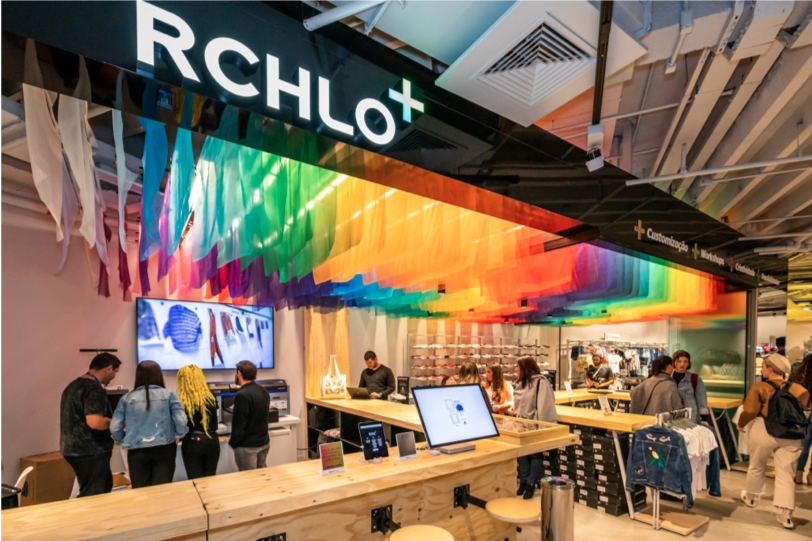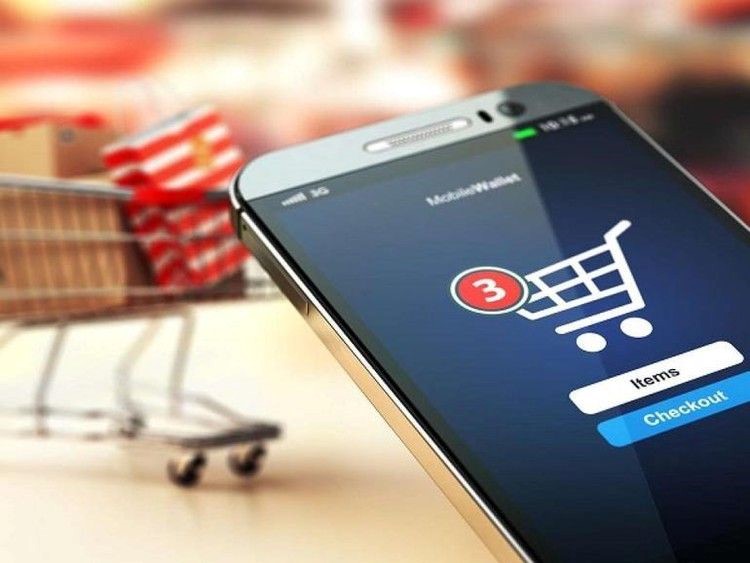Essential Infrastructure for Retailers Through Digital Transformation
Online shopping and eCommerce sales are becoming more important than ever before for consumers and for retailers, which makes it crucial for small retail businesses to know the essential infrastructure for a retail website. Many small business owners know that they are ready for a retail website, but they feel overwhelmed by all the details, features and options for how to build one.
A huge factor in gaining trust from customers is having a system that works. If your customers leave due to busy systems or a slow-loading website, chances are those customers will not return, as they perceive you as an unreliable brand. A stable, well-performing e-commerce platform will give your customers a good experience, and they will happily return to purchase more. This means you need to support your business with essential infrastructure for a retail website that performs well and can scale up to meet seasonal peak demands.
Of all the infrastructure elements, marketing may be the most important. To succeed, your website must be found. Once visitors are on your site, you need to keep them there and compel them to buy from you. Whether it’s website design, social media, search marketing, merchandising, email, or other forms of advertising, it’s all about marketing.
The Important of Infrastructure for Retailers
Every retail website needs infrastructure — the “bones” and back-end of the website — to host all the site’s data and integrate with the eCommerce platform that you will use to make online sales. You need to decide if you want to build your website infrastructure yourself (known as “open source”), you should know all the essential infrastructure for a retail website. When retailers lack the back-end resources to support new technologies, they can find themselves falling behind their competitors,
Ideally, every website should contain only the pages that visitors need. However, in reality, it is difficult to know which website creation background?
Each business website will have its specific websites. There are no formulas for all types of websites, so you will need to consider selecting a site based on your many personal factors, by digging into your business goals to be able to configure your site. website structure.
Retailers may think that building e-commerce is merely deploying an online payment platform, but it takes more support than that. It requires different IT essential infrastructure for a retail website to maintain scalable volume and keep customer information protected. After shaping the website structure, website construction will take place more smoothly.
1. Online Solutions for Businesses
Almost every retailer now has an online presence and any retail website must be easy to use across a range of devices and software platforms, allowing customers to gain access whenever and wherever they want.
However, no matter how well designed, it also needs the right essential infrastructure for a retail website to support it. Today, downtime can cost millions in potential sales revenue and significantly damage consumer confidence. Retailers must ensure the data centers they use have the required levels of resilience, security, and scalability to ensure digital channels are kept online.
While Driverless vehicles and drones are yet to reach the desired maturity levels globally as well as in India, technologies like AI and VR are taking the center stage in the retail world.
These technologies help brands to provide exceptional service in the form of experiencing the actual look and feel of products while browsing at home, virtually trying items without actually going to the trial rooms, personalized communications basis the needs and requirements, knowing product information through bots, etc. By leveraging such technologies, retailers can provide an immersive experience.
2. Customer Experience
There are many choices today for delivering high-quality customer service. You can manage those activities in-house or outsource to a third party. Basic customer service for sales and post-sales activities can be handled using email and, for more extensive needs, phone support. A customer-management system will make those activities easier, but for smaller companies, it is not a requirement.

Increasingly connected and informed consumers are now digitally influenced across each touchpoint of their purchase journey right from inspiration to purchase validation.
Customer experience is significantly elevated by employing digital across in-store processes, merchandising, marketing, and promotions. The Digital customer journey encompasses the complete lifecycle from discovery to loyalty and is increasingly becoming complex. However, retailers continue to invest in apps that are deployed on mobile devices provided to store associates.
To truly create a customized experience, retailers should look at providing information on the customer’s device itself. Technology is playing a major role in enhancing this experience and presents a huge opportunity for retail brands to gain first-mover tech-advantage. The product-focused approach is not anymore the sole factor in driving brand sales.
3. Comprehensive wireless and wired in-store network
An in-store network can be considered as an independent entity but at the same time part of a much larger organism. While connectivity to the main network is a key element, a secure in-store network – supporting both wired and wireless connectivity – is critical for supporting existing applications and enabling new applications and services. As data analytics use cases become more prevalent, it is the network that will ensure retailers can accommodate information from customer-facing mobile apps, inventory systems, smart cameras, and other IoT endpoints.
Networks that have been used to support limited store functions, such as point-of-sale systems, must now provide the connected consumer with Wi-Fi access, as well as support several other touchpoints and systems to deliver a better experience and help retailers optimize operations.
Stores can further boost customer satisfaction by using wirelessly connected Bluetooth beacons, taking advantage of geolocation technologies to send personalized messages to a customer’s smartphone when they enter a store, alerting them to promotions or delivering digital coupons tailored to their needs.
With wireless in place, they don’t have to decide: They can view exception reports, problem reports and sales reports on their mobile devices and still pay attention to customers and associates, all while moving around the store.
4. Cloud Applications in Data Storage
Protecting against advanced malware attacks requires a solution that integrates advanced security capabilities throughout the entire network. It requires a solution that integrates a security fabric of collaborative solutions into the network infrastructure itself, eliminating weak links throughout the distributed network, from kiosks to the cloud.
They’re scalable, they’re accessible from anywhere, and they’re cost-effective: cloud applications are consuming the world of retail management and for good reason.
Here are a few examples of game-changing trends in retail enabled by the cloud.
- Customer service applications let retail stores identify individuals when they walk through the door and trigger customized promotions that sales associates can present to nurture brand loyalty.
- Retail as a Service, or RaaS, lets IT departments offload responsibility for housing data on retail operations to cloud platforms. During peak seasons, retailers can purchase more storage, and when enterprises are ready to scale up, the infrastructure they need is already in place.
- Inventory management systems synchronize with Point-of-Sale applications for faster and more accurate inventory evaluation.
- Mobile Point-of-Sale applications help drive sales by breaking up lines during peak traffic and allowing sales associates to get to customers before they have a chance to change their minds.
The question about big data is no longer how to obtain it, but what to do with it. Cloud-based applications are helping make sense of big data and deliver it when it’s most useful: in real-time. In a culture where trends rise and die in mere days, aggregate sales information can keep store managers and sales associates in-the-know about current top sellers. Back at corporate headquarters, purchasing agents can use real-time sales information to make inventory choices.
All the flexibility offered by cloud applications doesn’t mean much without connectivity to match. Many retailers are moving to 3G/4G/LTE for connectivity that can scale and adapt as quickly as cloud applications, provide more reliable service, and offer enough data to run the increasing number of cloud applications being utilized by retail enterprises.
5. End-User Solutions to Apps and Data
More of a near-term concern than backend retail IT infrastructure, end-user solutions can play a pivotal role in powering current data-centered initiatives and giving organizations the ability to test out new applications. These solutions include mobile point-of-sale (mPOS) devices, barcode scanners, smartphones, and tablets.
Retailers can use these devices to put both product and customer information at the fingertips of floor associates, which increases their value to shoppers and mitigates an existing pain point. Retailers should also ensure their corporate staff has the collaboration and communication tools they need to be effective, including up-to-date desktops, voice/phone solutions, and videoconferencing tools.
Many companies are investing heavily in mobile applications. Users are accustomed to downloading apps to their smartphones and tablets. Retailers can similarly take advantage of mobile apps that allow information to be shared over multiple screens across the physical retail space. Members of a retail sales staff can use these apps to quickly interpret information from multiple parts of a store and translate this information for the customer.
Brands can use mobile apps to facilitate self-service. The Hilton hotel enables their most loyal customers to book and check-in to their rooms and even enter their rooms using their mobile app, all without having to approach their front desk. This makes it easy and convenient.
6. Pricing and POS Solutions
In this digital retail era, retailers can no longer rely on traditional pricing methods. Sophisticated price comparison engines not only display competitors’ pricing instantly but also track prices over time and forecast changes. Online retailers especially Amazon are following advanced dynamic pricing strategies to respond to price changes in less than an hour.
Besides, shoppers are increasingly seeking customized engagement and personalized deals that reflect their needs. Individualization and interactivity are the two key themes emerging for retailers in a digitally influenced age. In the former case, retailers can have customized prices or tailor-made discounts based on personal shopping preferences across channels. In the latter case, retailers can utilize dynamic pricing strategies that allow prices to be changed easily based on customer feedback.
One such technology that combines both capabilities is the use of electronic shelf-edge technology comprising e-ink or color displays that replace traditional paper-based labels. It offers the chance for retailers to be proactive in their pricing strategies by dynamically controlling prices for an entire cluster of stores from one location.
Also, these displays can be used for targeted communication, displaying product reviews & recommendations and reducing time and effort in manually printing and changing labels for the “The Digital Customer”. POS Solutions Payments and checkout is a significant pain point for customers in retail stores as they encounter long queues severely impacting shopper experience. The recent development in technology for a financial transaction has increasingly fueled the use of electronic-based payment instruments globally.
7. Shopping Cart and Payment Gateway Integrations
This is an integral part of any e-commerce store, the shopping cart. This is where your end consumers store their products to continue with the checkout process. A flexible cart allows both the guest user and registered user to checkout. Whereas the guest checkout does not require the user to sign up on the site, hence aiding them in making the process faster.
A store’s technology infrastructure can make or break a customer visit, leading to greater sales and successful customer retention. While successful sales websites are simple and not picky. The key factor to profitability is an ergonomic structure and an effective offering – an essential infrastructure for a retail website. Therefore, you need to provide customers with payment information easily accessible. If you sell a lot of products, you should provide a virtual shopping cart and a “Checkout” page to make it easier for customers to trade.

A good eCommerce website gives you the option of integrating with diverse payment gateways by not limiting your choices to a selected few. you need to provide customers with the payment information easily accessible. If you sell a lot of products, you should provide a virtual shopping cart and a “Checkout” page to make it easier for customers to trade.
8. Security
Establishing trust with online visitors is essential. Not everyone who visits your site will be set on making a purchase. Some users will be visiting for the first time and maybe hesitant to purchase from an unfamiliar site. Establishing trust, even in tiny increments, is the key to keeping more customers at your site during the early stages of the buying cycle.
One more trust factor is security. As an e-commerce company, your customers trust you with their personal and payment data. Making sure that data is kept safe is vital for your customers, employees, brand, and reputation in the industry. It pays to have measures in place to ensure your infrastructure is secure and monitored.
Before you should ever consider a redesign for your site, you need to analyze any potential defects in the existing conversion funnel. The lifeline of any e-commerce site can demonstrate what is causing a decrease in sales. You need to track down what is leading to a decline in sales and remedy the problem immediately to keep your business alive. There are several ways you can optimize your website to increase sales, and actually, most of those have to do with the usability of your site, as well as the accessibility of your checkout and payment processes. If the shopping experience is tedious, your products are difficult to find, and paying for them is a hassle – your customers will go elsewhere.
The Bottom Lines
Having the proper structure in place is essential for creating a successful e-commerce experience. Allowing customers a way to buy inventory anytime, anywhere can not only maintain a stream of revenue for the organization but also help retailers expose valuable insights that can be used to drive sales further. With a strong hosting platform, security protections and analytics software, stores can make the most of any situation.
In business, do you always want many customers to know your website as well as the services and products you provide? The first thing you have to do is invest very well in both the interface and content of the website and the article below.
Your website is the start of everything!
The implementation above might be time-consuming and an energy drainer for any organization to start transforming into a digital-based business. Most importantly, make sure you go in the right direction. A strong outsourcing advisor is the beginning of your implementation roadmap. You need to continue what you have started on your website into real-world customer interactions. This means always providing great customer service by tracking, delivering the goods people want and keeping your promises.









